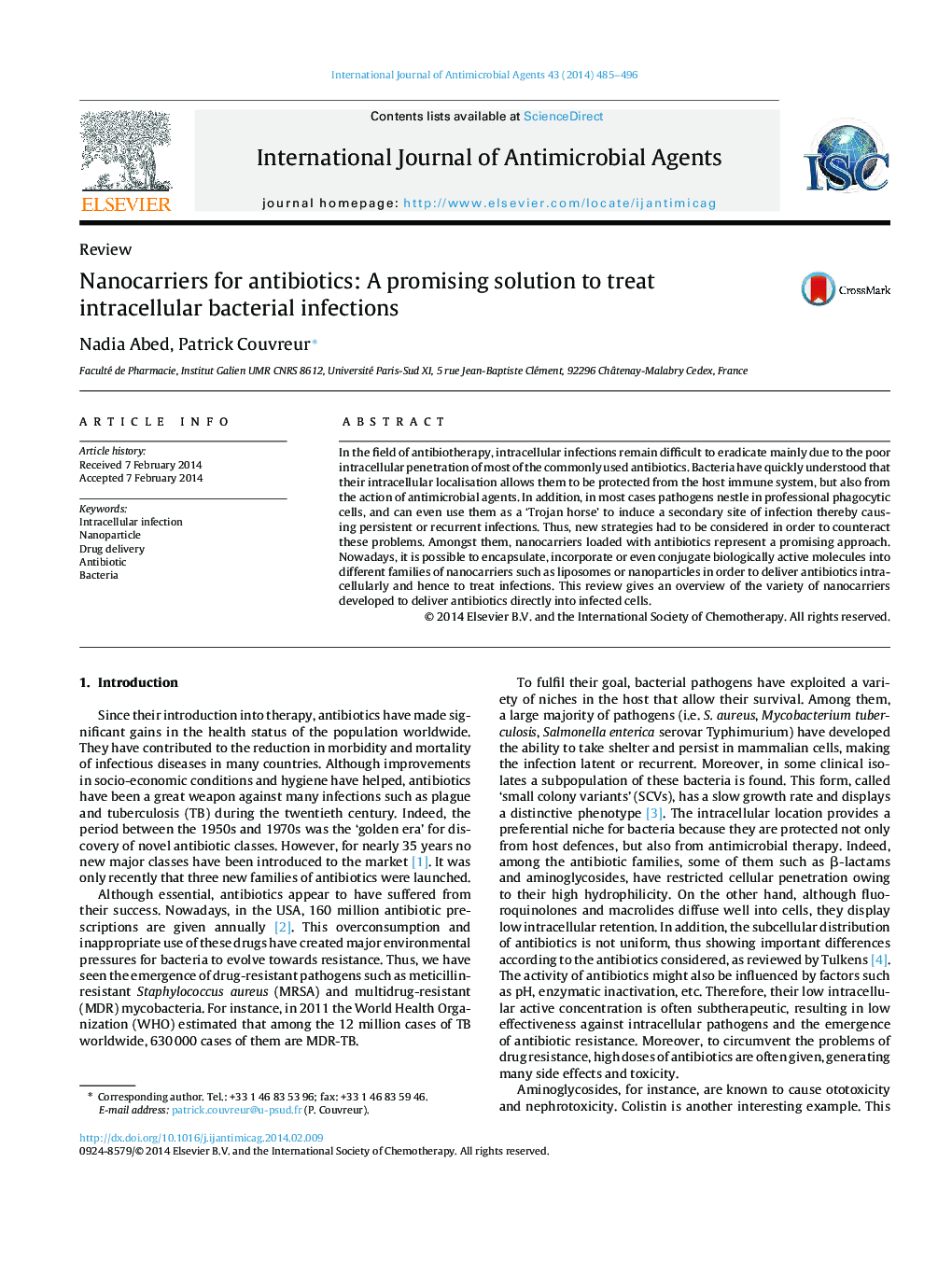| Article ID | Journal | Published Year | Pages | File Type |
|---|---|---|---|---|
| 3358852 | International Journal of Antimicrobial Agents | 2014 | 12 Pages |
In the field of antibiotherapy, intracellular infections remain difficult to eradicate mainly due to the poor intracellular penetration of most of the commonly used antibiotics. Bacteria have quickly understood that their intracellular localisation allows them to be protected from the host immune system, but also from the action of antimicrobial agents. In addition, in most cases pathogens nestle in professional phagocytic cells, and can even use them as a ‘Trojan horse’ to induce a secondary site of infection thereby causing persistent or recurrent infections. Thus, new strategies had to be considered in order to counteract these problems. Amongst them, nanocarriers loaded with antibiotics represent a promising approach. Nowadays, it is possible to encapsulate, incorporate or even conjugate biologically active molecules into different families of nanocarriers such as liposomes or nanoparticles in order to deliver antibiotics intracellularly and hence to treat infections. This review gives an overview of the variety of nanocarriers developed to deliver antibiotics directly into infected cells.
